the fashion issue
Fashions serves as a canvas for personal creativity, but opens the door to ethical limitations



Fashions serves as a canvas for personal creativity, but opens the door to ethical limitations


Arms open wide, junior Yasmin Kudrati-Plummer, casted as Leading Player, sings in front of the glowing set for Pippin. Kudrati-Plummer as well as the lighting and set design for the show were each nominated for a Cappie. “The set design for this show is beyond anything I’ve ever seen before. It truly made the show come alive, and clearly the Cappies audience agreed with us on that.”
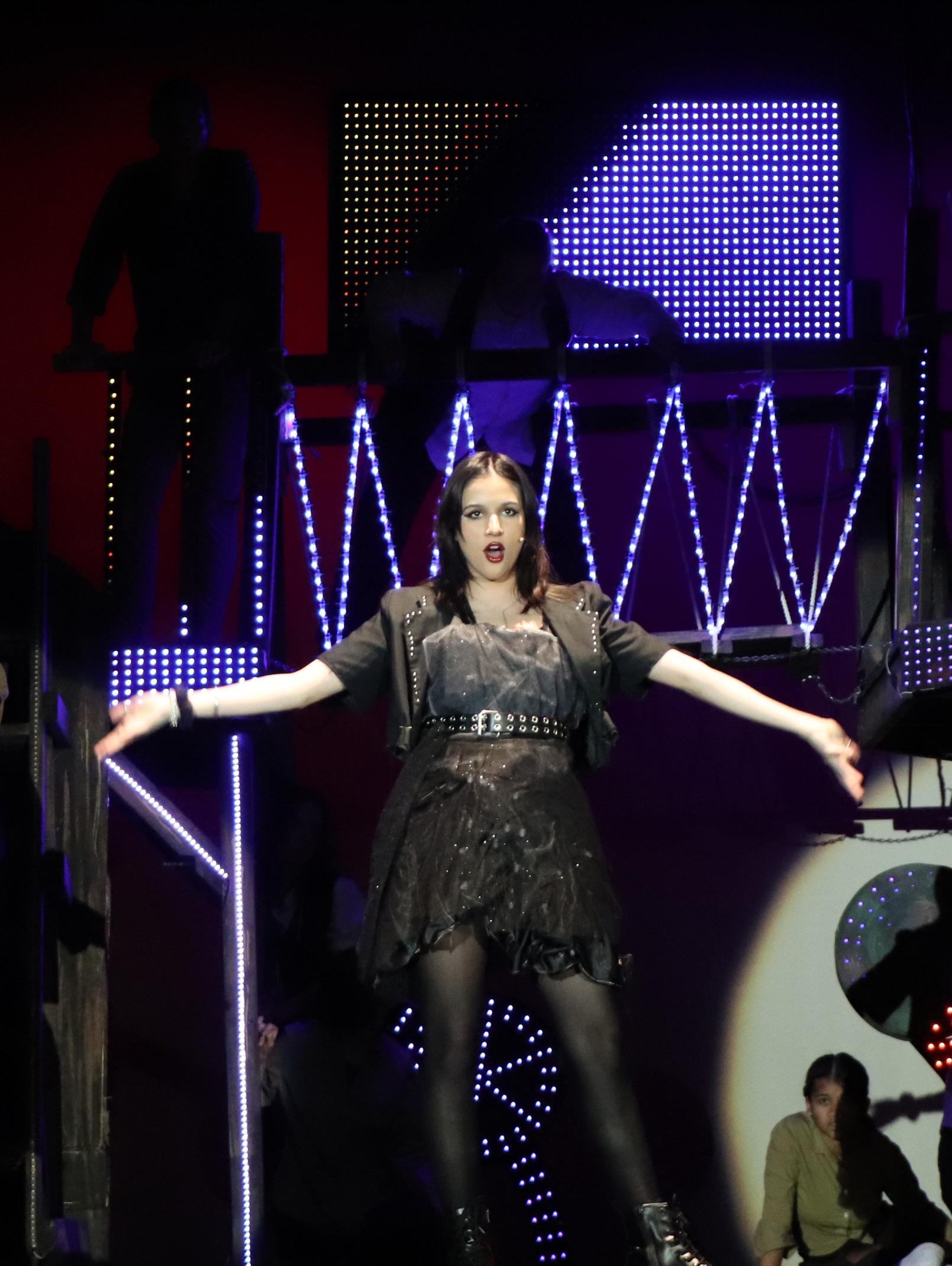
Print and Online Editors-in-Chief
Christina Lu
Robert Stotz
Eric Feng
Aarya Kumar
Grace Sharma
Chris Yoo
Team Leaders
Anya Raval
Lucas Ribero
Keertana Senthilkumar
Laura Zhang
Advisor: Erinn Harris
tjTODAY is the official newsmagazine of Thomas Jefferson High School for Science and Technology. The staff is deeply committed to a code of journalistic ethics that demands
the exercise of accuracy, good judgment, and impartiality. The content of tjTODAY is determined by the editorial board. Unsigned editorials reflect the majority opinion of the staff of tjTODAY, but not necessarily the opinions of individual editors.
tjtoday.tjhsst @tjhsst_media
tjtoday_official tjTODAY



 PHOTO// E. Noh
PHOTO// E. Noh


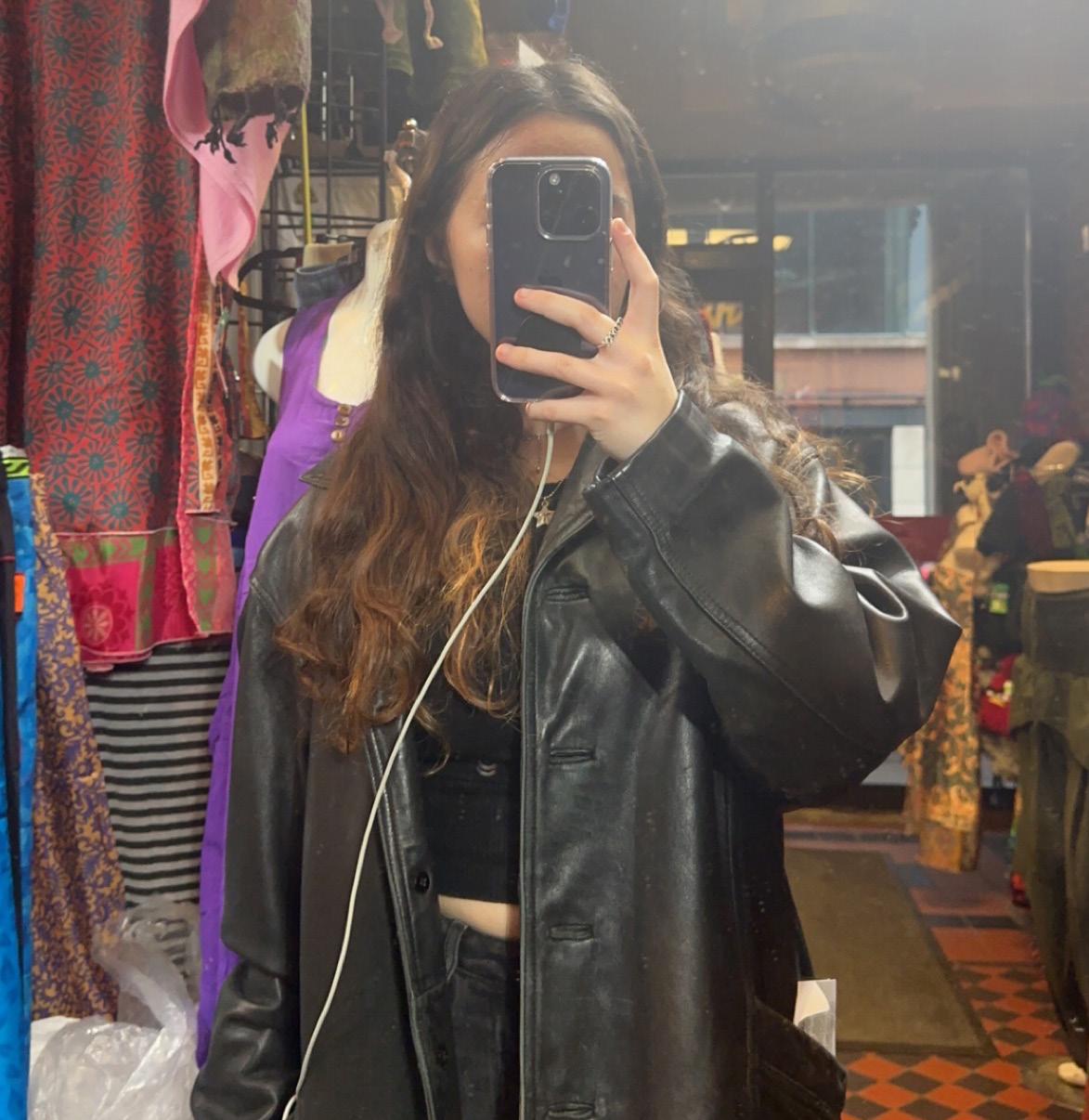

Through stitching, painting, and crocheting, many Jefferson students have taken fashion into their own hands—both literally and figuratively.
Senior Naomi Heilen began sewing by making costumes for Odyssey of the Mind, a creative problem-solving program.
“I’ve done Odyssey of the mind since I was in kindergarten and the whole point is to start with nothing or start with something that someone considers trash and make it into something new. So we’ll make costumes out of unconventional materials,” Heilen said.
After stopping Odyssey of the Mind after freshman year, Heilen enjoys keeping in touch with the nifty part of her through thrift flips.
“I like customizing my own things. I’ll go to the thrift store and get something that doesn’t fit me quite right or isn’t the cutest and then I’ll cut it and repurpose it and make it into something cuter,” Heilen said.
After not liking any of the dresses she tried on during prom shopping, Heilen decided to make her own.



“Senior year came and I went prom shopping with friends and nothing was hitting. I went home that night and made a mock top following this random YouTube tutorial and it ended up working out, so then I just decided to run it,” Heilen said.
Heilen incorporated two different colors and customized her heels with butterflies.
“I wanted something unique and something earthy which is why I chose brown and gold,” Heilen said.
After repeated trial and error, the project was finished the night before prom.
“One of the straps ended up snapping after dinner, but I brought my backup dress and it was totally fine and I’ve already fixed it,” Heilen said. “I was super happy with it though. I think it was unique and it was very me.
Heilen enjoys customizing her clothes because of the unique history of each item.
I really like wearing something used — something that feels like it has a story behind it — which is why I like to go thrifting a lot,” Heilen said. “I like trying something on and thinking it feels unique and it feels like it has a story.”
PHOTO//N. Heilen PHOTO//N. Heilen PHOTO//N. Heilen Wearing her handmade dress, senior Naomi Heilen poses at prom. “I had a lot of trouble figuring out exactly what I wanted to do with the skirt because I’m scared of invisible zippers. I ended up using clasps, but the skirt process was definitely very trial and error,” Heilen said.As the cast of Jefferson’s theater production proudly shows off their costumes, junior Mayuka Valluri works behind the scene as costume designer. “I think the easiest to work with is cotton and linen because there’s a lot of structure with it. I sew a lot for the theater department as well, so there, I will 100% always choose a more structured piece to be able to do things quickly and easily,” Valluri said. PHOTO//

Junior Mayuka Valluri was first introduced to stitching in elementary school and has been making clothes for about 10 years.
“My elementary school had a lunchtime club since our custodian at the school really liked knitting and sewing,” Valluri said. “She would host a little lunch thing with all of us.”
While her interest began with learning how to knit, Valluri’s focus soon shifted to sewing.
“I originally started by knitting and so when you finished knitting, some people sew that together so I ended up liking the part where you sew everything together more than knitting,” Valluri said.

Valluri then began to teach herself how to sew.
“There are a lot of cool resources, a lot of different things
on YouTube, and a lot of different websites. A couple of books here and there, and my public library is pretty good and there’s a wide range of resources available,” Valluri said.
Valluri tends to make clothing for special occasions.
“I really like dresses. I think there’s a lot that you can play around with them. There’s a lot of different shapes that you can do. There’s a lot of different techniques that you can use,” Valluri said.
Making clothes has given Valluri more respect for both the process and the clothes.
“I think one of the biggest things I’ve learned is when I go to a store and I am buying clothing, I feel like I don’t just buy things because I like them anymore,” Valluri said,” but because I know the amount of work that it should take a person to do it.”
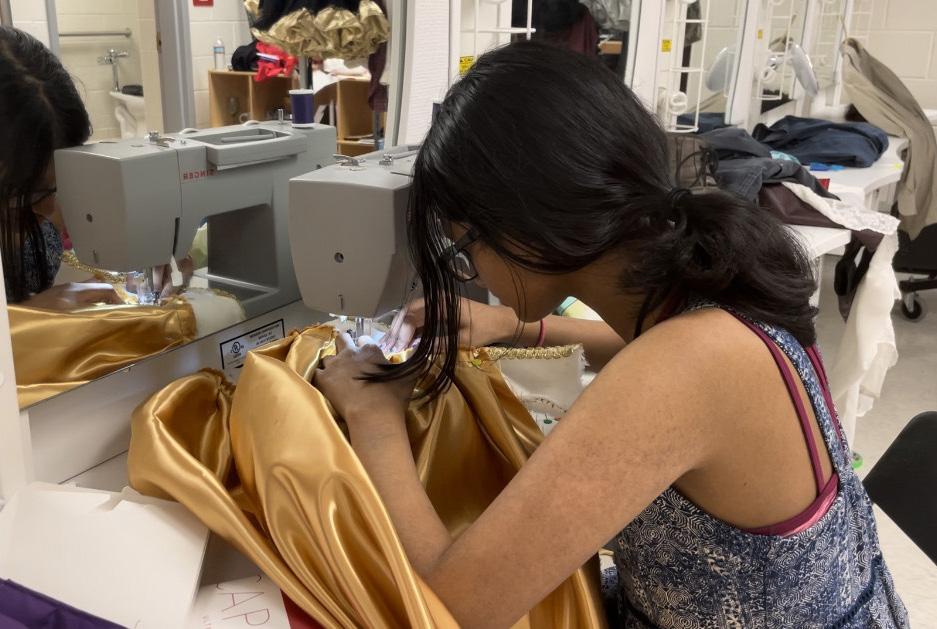
Starting with her dad’s old jacket, sophomore Vivian Xue began experimenting with painting clothing to add her own touch.
“My first experience with [painting clothing] was actually when I got one of my dad’s old jackets and then I painted it and I made it my own,” sophomore Vivian Xue said.
Xue realized she could make a business out of her pastime.
“I made posts on Facebook and I was just like, I sit here during lunch and if you want something painted, you can just come to me because I have a lot of art experience but not that much experience with clothing,” Xue said.
Xue’s first job came from a friend.
“She gave me her hoodie and asked me to paint on it, and I just took it home and did a couple base layers of white paint and then her name and TJ logo—it was really good and I got 20 bucks out of it,” Xue said.

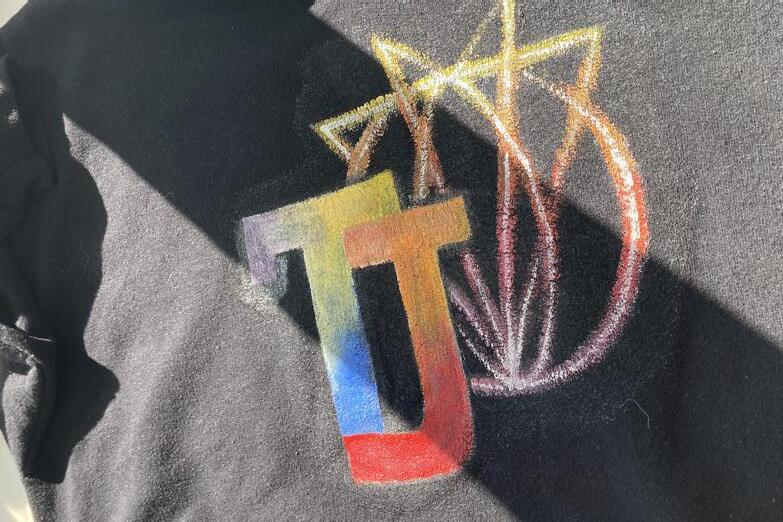
Xue sees her work as a combination of self-expression in both art and clothing.
“Sometimes you have this mental image of something that you really want to wear, and you just can’t find it,” Xue said. “So, the easiest way to get around that is just to make it and the process of turning something from a vision to an actual thing is so fun.”
When modifying pants or jackets, junior Ketevan Gallagher primarily looks for cheap clothing.
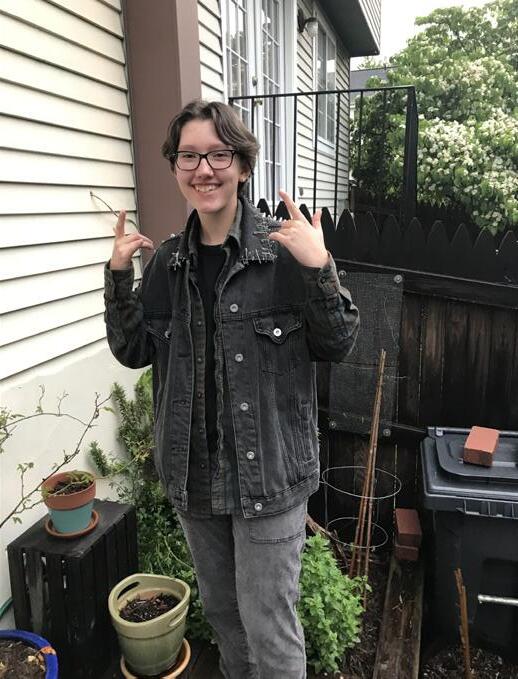
“Especially because when I make patch pants, I don’t want to have nice jeans because I’m going to be ripping them up. I’m going to be sewing things on them. So just something cheap I can really make my own,” Gallagher said.
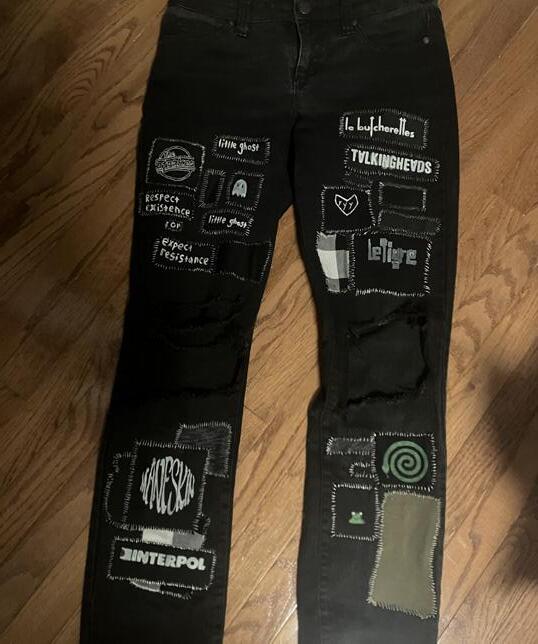
Gallagher then modifies this clothing to make patch pants and jackets out of her thrift finds. Her process includes using freezer paper, which is paper on one side, and plastic on the other, to iron onto the fabric.
“I have a bunch of blank patches kind of as a base and then I have a number of patches that have designs on them. So I’ve done some embroidery,” Gallagher said.
Gallagher derives fashion inspiration from her music taste.
“I believe [patch pants] originated in the 60s among working-class people who maybe didn’t have multiple pairs of jeans so they would just put patches over places where they would fray or get torn, and it kind of got adopted into punk subcultures. That’s really where I take a lot of my inspiration from because I listen to a lot of the music,” Gallagher said.
Gallagher’s clothing choices reflect part of her identity.
“I try to put stuff that reflects who I am, but it’s the bands that I like and the things that I believe in and I think it’s really cool to wear stuff that really reflects that,“ Gallagher said.
Gallagher’s love for punk culture led to her inspiration for making patch pants. “I’m really into punk music and I’ve watched or read a lot of stuff about the punk scene especially like 80s and 90s,” Gallagher said.
Showcasing her artistic skills, sophomore Vivian Xue embellishes a black sweatshirt for a friend. “Art is like self-expression and it’s just a more chill way of doing that because clothing is also self expression,” Xue said. PHOTO//V. Xue PHOTO//V. Xue Junior Ketevan Gallagher wears a black jean jacket she modified with pins and buttons. “I’m usually modifying pants or jackets I’ve gotten from like thrift stores mainly,” Gallagher said. PHOTO//K. Gallagher PHOTO//K. GallagherJunior Thanisha Chowdhury learned how to crochet from a friend in sixth grade.
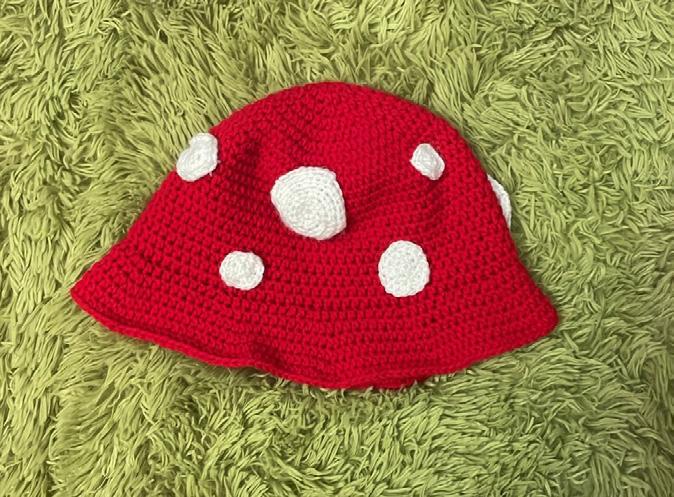

“I stopped and then the summer before sophomore year, I picked it up again just because after doing a whole year online. I wanted to do something with my hands,” junior Thanisha Chowdhury said.
Chowdhury began making small purses and pencil cases.
“Then, I upscaled scarves and hats, and later in sophomore year, I started making this huge sweater, with a bunch of different squares,” Chowdhury said.

Pinterest serves as a source of inspiration for Chowdhury.
“I’ll see something on Pinterest that I like and if I can, I’ll try to figure out what the pattern is on my own. It’s fun like problem-solving or a puzzle, but even if I find a pattern

online, I usually modify it a little bit to fit what I want,” Chowdhury said.
Creating has slowed down Chowdhury’s process of getting new clothes.
“I feel like nowadays it’s really easy to just go on Amazon, choose one-day shipping, and get something as soon as possible. When I create things, I have more time to think about what I want the end product to be,” Chowdhury said.
The process also gives Chowdury more control.
“I can add a button or something. I can add a pocket anywhere I want. So that control is really nice,” Chowdhury said. “The whole thing with slow versus fast fashion and being able to use products more sustainably and being more conscious of what we’re consuming is really important.”
Search ‘#thriftstore’ on TikTok and you’ll join over 1.1 billion people in watching videos under the tag about shopping secondhand. Especially in the years following the pandemic, thrift shopping, or “thrifting” has become a trend on social media. But at Jefferson, thrifting is not as common.
“I think I’m the only one out of my friends that that goes pretty frequently,” junior Abi Little said. “A lot of times when [people] think of thrifting they’re taken aback by the fact that they’re wearing someone else’s old clothes.”
Students thrift to help avoid fashion overproduction, which is when brands will mass produce clothing in response to trends, often through unethical methods such as underpaying workers and outsourcing labor to developing countries.
“[Thrifting] made me realize how much I was buying,” freshman Dylan Truncellito said. “In a lot of thrift stores, you see a lot of clothes from fast fashion. It’s crazy. A lot of people might buy it, wear
it once, throw it out, donate it, give it to a thrift store, then they never think about it again.”
Thrifting for clothes provides a more sustainable alternative to buying brand-new clothes.
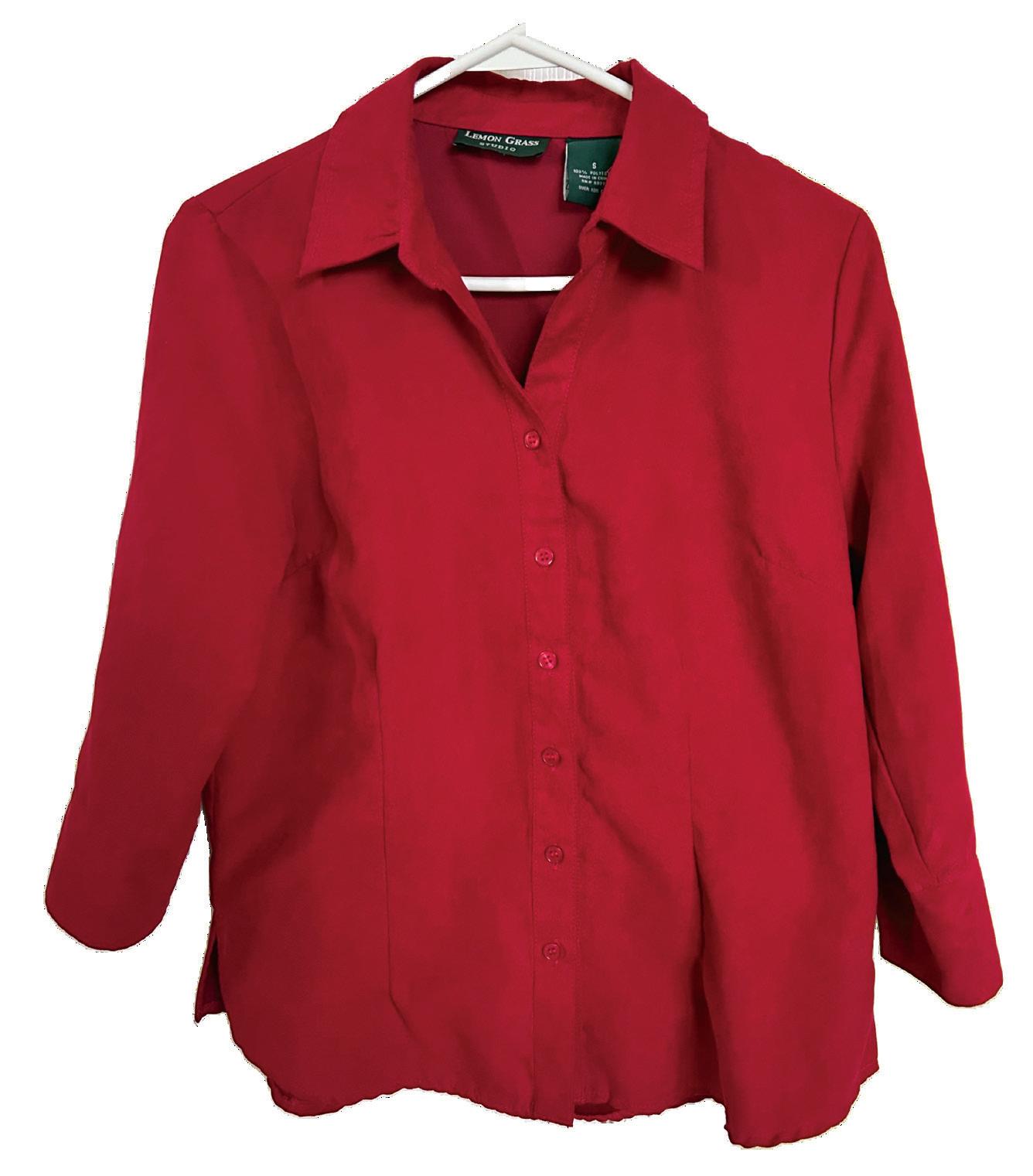
“We want to minimize the amount of production we have to do because the more we produce, the more we inevitably throw away,”
Environmental Science Club president Claire Wang said.
The Environmental Science Club and the Environmental Impact Club are collaborating to run a thrift shop at J-day, Jefferson’s annual end-of-year carnival with fundraising booths hosted by student clubs and organizations.
“The first time I went thrifting, [it] was intimidating because it was something I’ve never done before,” Environmental Impact Club officer Irene Ko said. “By bringing [thrifting] on a smaller scale to TJ, it makes it really accessible for someone to browse through clothes.”
Whether it be for sustainability, unique fashion, or simply fun, these Jefferson students love thriftingPHOTO// A. Masud
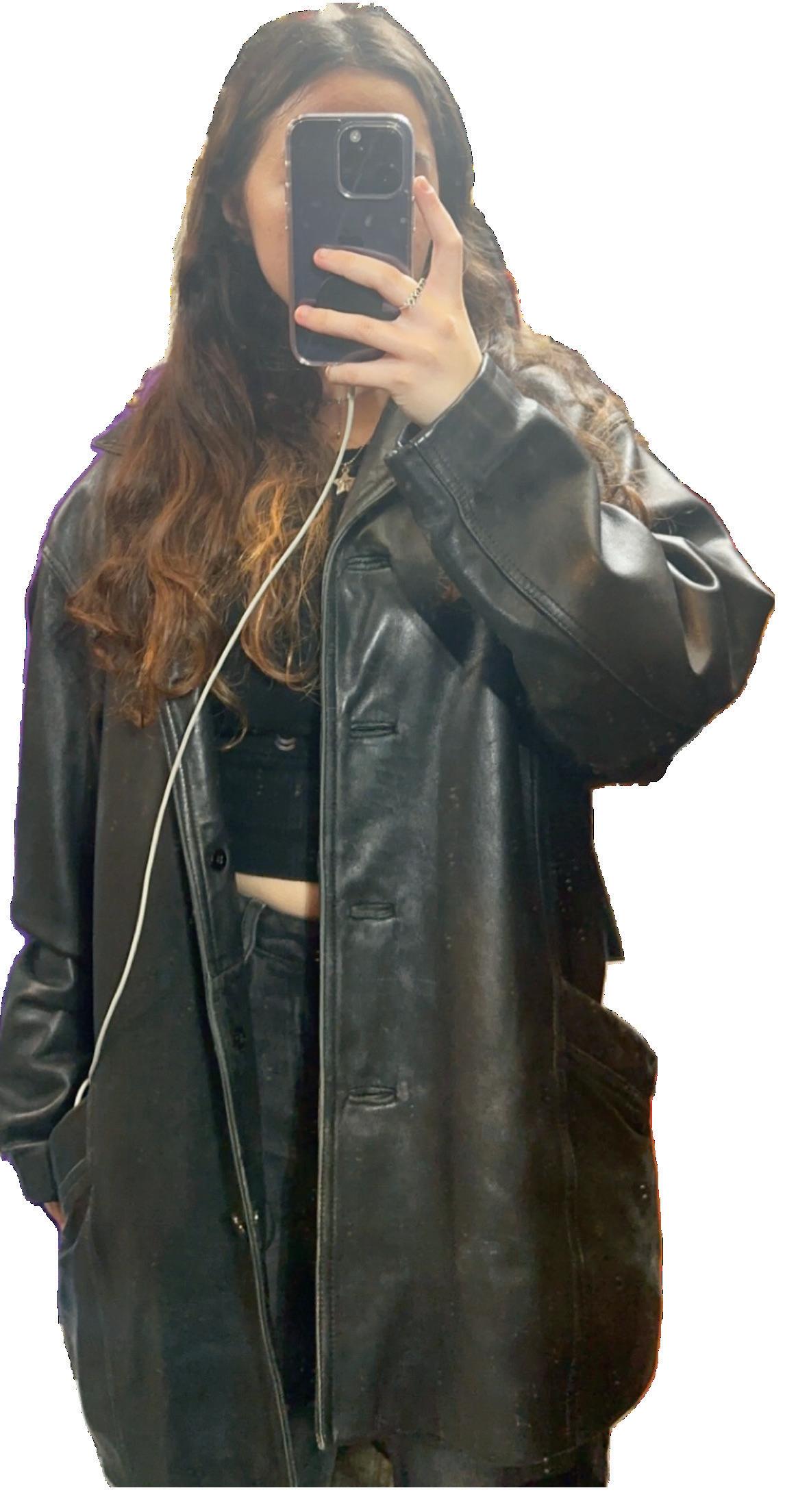
Students who donate clothes to bins around the school can receive store credit to exchange for other clothes at the booth.
“One of the best things you can do to help us as a community transition into more sustainable living is to share cool and creative ways you can be more sustainable,” Wang said. “If [the J-day booth] goes well this could definitely be a yearly thing to have a [cyclical] movement of clothes through the TJ community.”
Thrifting incentives extend to whether a certain store is ethical, and if an individual wants to purchase clothing without supporting unsustainable brands.
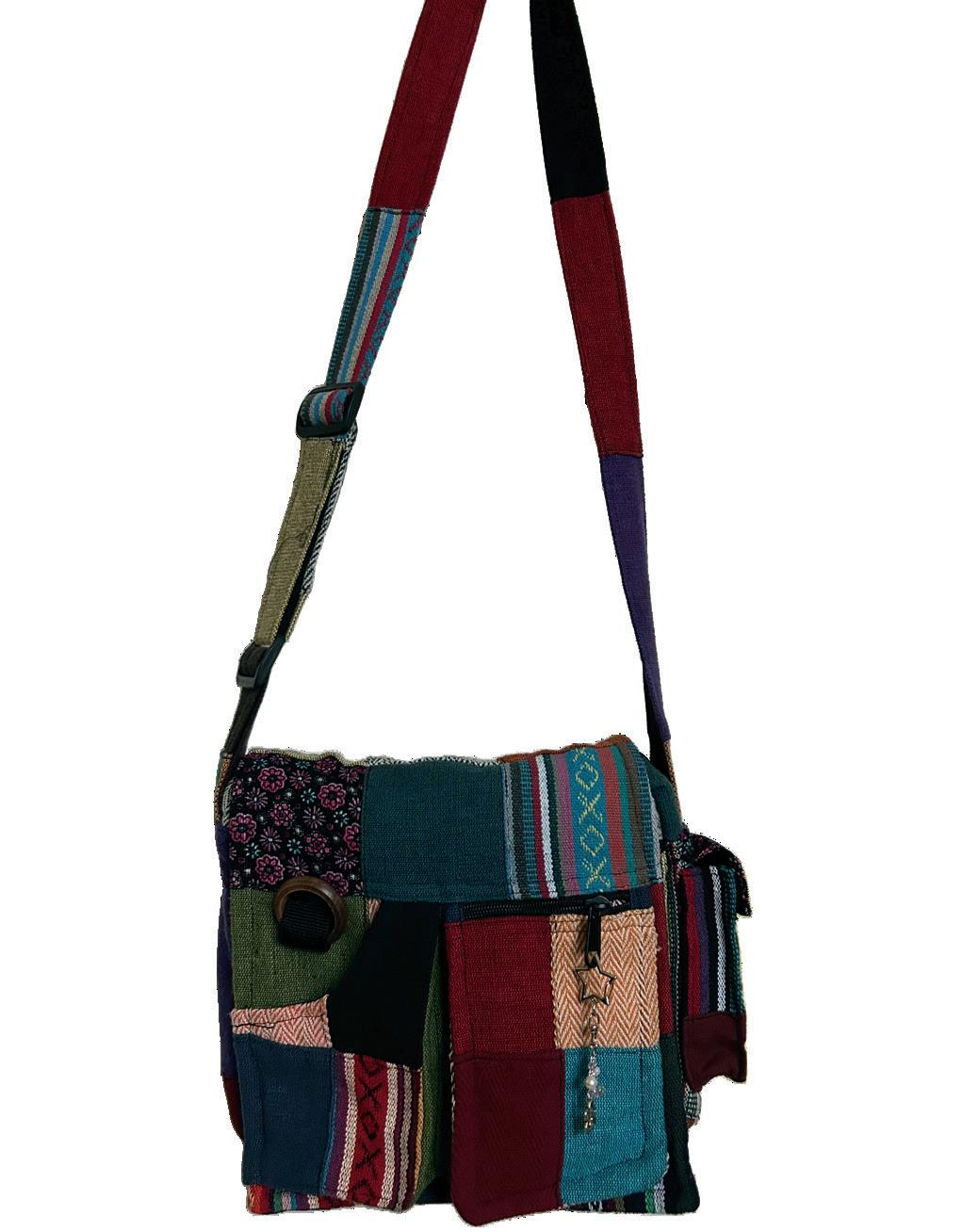
“If you’re aware that a brand is not sustainable and you have the money to buy from a sustainable brand or you have the facilities to thrift, I think that’s a good option,” sophomore Aubree Masud said.
Along with sustainability, students consider clothing style when thrifting.
“A lot of the clothes I like wearing aren’t as ‘trendy.’ I like to wear stuff that’s an older style, that isn’t what a lot of people wear,” Truncellito said. “I usually like thrifting because I can find a lot more of those clothes.”
When looking for fashion from previous decades, thrift stores carry a larger range than department stores, which often only carry current trends. Masud takes inspiration from her mother’s fashion sense back in the 90s for her style.
“[My mom] used to take a lot of pictures on a digital camera. She was an icon honestly. I took a lot of inspiration from her, TikTok, Pinterest, and social media,” Masud said. Outside of sustainability or fashion, thrifting can purely be a fun activity between friends.
“It makes shopping an experience and event you’re doing with friends, just looking for clothes and searching through all the clothes,” Little said. “I just encourage anybody who wants to to get out there and go for fun.”

What are the costs of looking good?
Fast fashion, the rapid production and sale of trendy clothing, is a practice that heavily contributes to the downsides of the fashion industry. Goods inspired by the latest celebrity or event, while perhaps fulfilling in the short term, have a variety of long term consequences when it comes to its labor sourcing and the environment. To point out the obvious, fast fashion leads to a culture of waste. For those who can afford to, there’s no point in wearing clothes that have fallen out of style. The far more popular and unfortunately detrimental alternative is to simply trash or stash away the slightly used garments, ultimately sentencing them to an early fate.
The low prices for goods that are inherent to fast fashion are the result of the unfair labor systems companies rely on. In a statistic from the Smithsonian National Muse-
um of American History, over 75% of garments sold in the United States could be considered to have originated in sweatshops, or factories that take advantage of workers and their wages. When consumers choose to ride the wave of trendy items, they are fanning the flames of the dangerous conditions that underpaid workers employed by sweatshops labor in.
Ultimately, governments and corporations have the biggest responsibility to uphold standards in the production of clothes. It’s also important to acknowledge that some consumers can’t afford to buy from ethical brands. The consumers regularly buying hauls of clothing, only to wear each item a few times, are causing more harm.

With whatever capacity we have, we should make an effort to reduce our contribution to unethical fashion practices. In addition to combatting wasteful habits and avoiding impulse buys, shoppers should embrace a culture of repurposing clothing. Donating old clothes means that someone else may benefit from the clothes hanging in the back of our closets, untouched.
Taking matters into your own hands,
quite literally, can also make a difference. Learning how to sew and repair clothing yourself can remove the need to throw out goods because of one small hole or rip.
Here at Jefferson, there exists a whole new vein of opportunities to help out your community. Using the platform that our wide range of extracurriculars offer, clothing drives could become a more common part of our school. All it takes is one club to coordinate and advertise the event in order to reach a population of roughly 2000 students, a majority of whom could contribute.
Speaking of clubs, merchandise serves as yet another way in which students can make a difference. As opposed to using the popular company CustomInk, which received a sustainability rating of “We Avoid” by the organization Good on You, opt for a more local approach. We have a responsibility to do what we can, however seemingly small, to support a healthier future. Responsible sourcing from local businesses and shifting toward a culture more supportive of donating and repurposing old clothes are ways through which we can address this issue at the consumer level.
The premise of [Pippin] is that there’s this troupe of traveling actors, and they travel to different towns and they put on a show and every time they go to an and every night, they select a member of their audience to be the main character of their show.
My role was Fastrada, basically a sort of evil stepmother. Pippin is in line for the throne, so she’s concocting all these evil plans to get Pippin out of the way.
The entire costume is student made. The purple skirt is a tearaway skirt, and there’s Velcro on the side. There’s a scene later during my song when I spin and I pull the purple skirt off to reveal a gold skirt underneath. That’s the coolest part.

Fastrada is just very extra. She is vain, self absorbed, she wants to be the star of the show, she’s flashy, she’s all that stuff. I feel the color choice of the gold being glamorous and flashy and the purple being royal helped contribute to that.
That pompous, vain air, the tearaway skirt, the crown, everything. It’s extra. It really did help contribute to building my character because the costume is everything that she is.